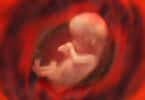A strand of hair has helped scientists find the hormonal environment in which a fetus developed inside the womb. Researchers at the University of Wisconsin-Madison used infant hair to better understand the male or female hormonal environment and also how exposure in the womb may affect the baby’s risk of developing chronic diseases in later life.
The scientists studied the hair of a rhesus monkey infant for the study. Christopher Coe, a professor of psychology at the university, explained the discovery,
“We had this ‘A-ha!’ realisation that we could use hair in newborns, because it starts growing one to two months before birth. It provides a glimpse of the prenatal hormone environment.”
He adds that the hair that is closest to the scalp gives most recent information but as you go down the strand the hair may hold vital hormonal timeline of the individual.
For the study, the researchers took several hair samples of a few mother rhesus monkeys and their infants. In the non-invasive method the hair was cleaned, pulverized into a fine powder and the hormonal signature read using a new mass spectrometry method – an analytical technique that produces spectra of the masses of the atoms or molecules comprising a sample of material.
First the scientists wanted to understand if the age and experience of giving birth of the mother affected the hormones of their infants and if there was any difference. To do so they studied the hair of first-time monkey mothers equivalent to a 15-year-old human female and an older monkey mother equivalent to the age of a human young adult.
They found that cortisone, an inactive form of cortisol, was higher in young mothers and in their babies than in the hair of older mothers and their infants. In babies of younger mothers, the estrone level was also higher which is a form of estrogen. The testosterone level too in babies of younger mothers was higher.
Surprisingly the researchers found that the level of both these hormones in male and female infants was very similar.
The researchers believe that the amount of exposure to these hormones could decide the ‘maleness’ or ‘femaleness’ of the babies. The higher exposure to these steroid hormones during fetal development leads to a more pronounced gender difference in behavior later in life.
Amita Kapoor, the first author of the study and former postdoctoral researcher adds that the hormones a baby is exposed to in the womb may also give an idea of the chronic disease the baby might suffer from later in life.
“Type 2 diabetes, metabolic disease, coronary artery disease, psychiatric disorders – there may be a whole host of long-term repercussions of stress in utero.”
The study was published in Pediatric Research journal.







